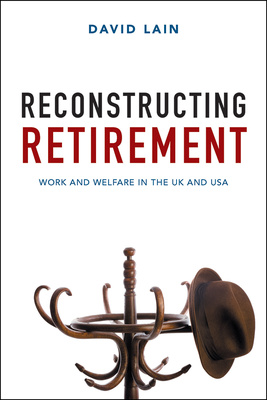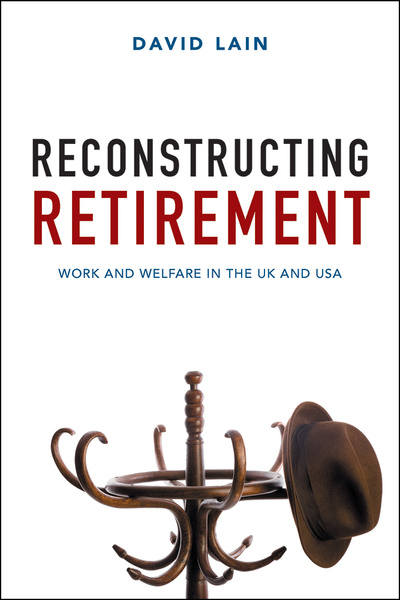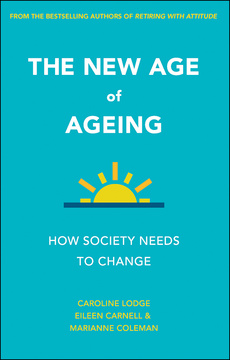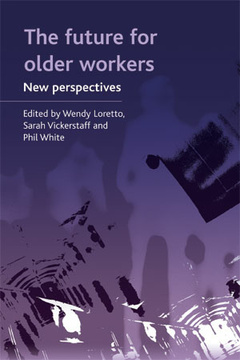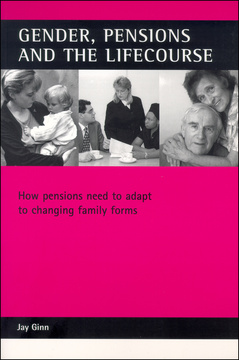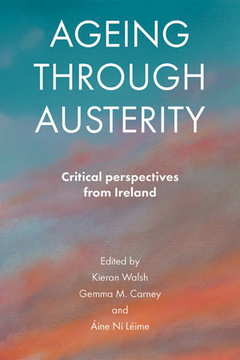Published
Jan 24, 2018Page count
224 pagesISBN
978-1447326199Dimensions
234 x 156 mmImprint
Policy PressPublished
Jul 5, 2016Page count
224 pagesISBN
978-1447326175Dimensions
234 x 156 mmImprint
Policy PressPublished
Jul 5, 2016Page count
224 pagesISBN
978-1447326243Imprint
Policy PressPublished
Jul 5, 2016Page count
224 pagesISBN
978-1447326250Imprint
Policy PressRetirement is being ‘reconstructed’, with the UK following the US path of abolishing mandatory retirement and increasing state pension ages. This timely book assesses prospects for work and retirement at age 65-plus in the UK and US.
Part 1 explores the shifting ‘policy logics’ in both countries that increase both the need and opportunities to work past age 65. Part 2 presents an original comparative statistical analysis on the wide range of factors influencing employment at this age. Part 3 proposes a series of policies across the life-course that would promote security and autonomy for older people.
Pathways to employment after 65 are complex and pressures to work at this age are likely to result in very unequal outcomes. This book is essential reading for researchers, students and practitioners interested in the late careers and the future of retirement.
"This book is to be highly recommended as making an important contribution to understanding the shifting nature of retirement. Policymakers and older people’s advocacy organizations would be well advised to carefully weigh its implications, striking as it does a welcome and rare cautionary note." Journal of Ageing and Social Policy
"This is a very good book on an important and topical subject, which should form the basis of any critical assessment of the rights and wrongs of early retirement" Journal of Social Policy
"The book is very well written and can also be of interest to anyone wishing to learn more about social determinants of work in later life." Journal of Population Ageing
“Once they read this book, policy makers, thought-leaders in the fields of aging, and scholars should feel compelled to engage in difficult conversations about the extent to which employment pathways can and do lead to quality jobs that align well with older adults’ preferences and priorities.” The Gerontologist
"I recommend Lain's work to all occupational scientists interested in work and retirement, or more generally, in the ways government policy actively and passively influences people's occupational opportunities, choices, and experiences. These are indeed matters of occupational justice." - Journal of Occupational Science
“Thought provoking and much needed response to those who are currently attempting to put far too positive a spin on projected trends in work and retirement policy.” John Williamson, Boston College, USA
"David Lain conducts a thorough and masterful comparison of US and UK policies and practices shaping the need, and the opportunities, to work beyond age 65." Madonna Harrington Meyer, Syracuse University and author of Grandmothers at Work: Juggling Families and Jobs
"A powerful and original analysis of the different employment trajectories of older people in the UK and the US. The comparison illustrates the challenges of extending working lives in each country and the unequal outcomes that are likely to occur for individuals." Sarah Vickerstaff, University of Kent
David Lain is a Senior Research Fellow at the University of Brighton. His research on older workers and retirement has led to a series of journal articles, book chapters, reports, media appearances and presentations to international policy audiences. He led the ESRC ‘Rethinking Retirement’ Seminar Series and received a Leverhulme Early Career Fellowship in 2011.
Introduction: Reconstructing retirement;
Part One: The reconstruction of retirement policy;
Changing retirement incomes;
The changing regulation of work and retirement;
Part Two: Reconstructing employment and retirement behaviour;
Pathways to working at age 65+;
The capability to work at age 65+;
The choice to work at age 65+;
Part Three: Current paths and policy alternatives;
Current paths and policy alternatives;
References;
Statistical appendix.







